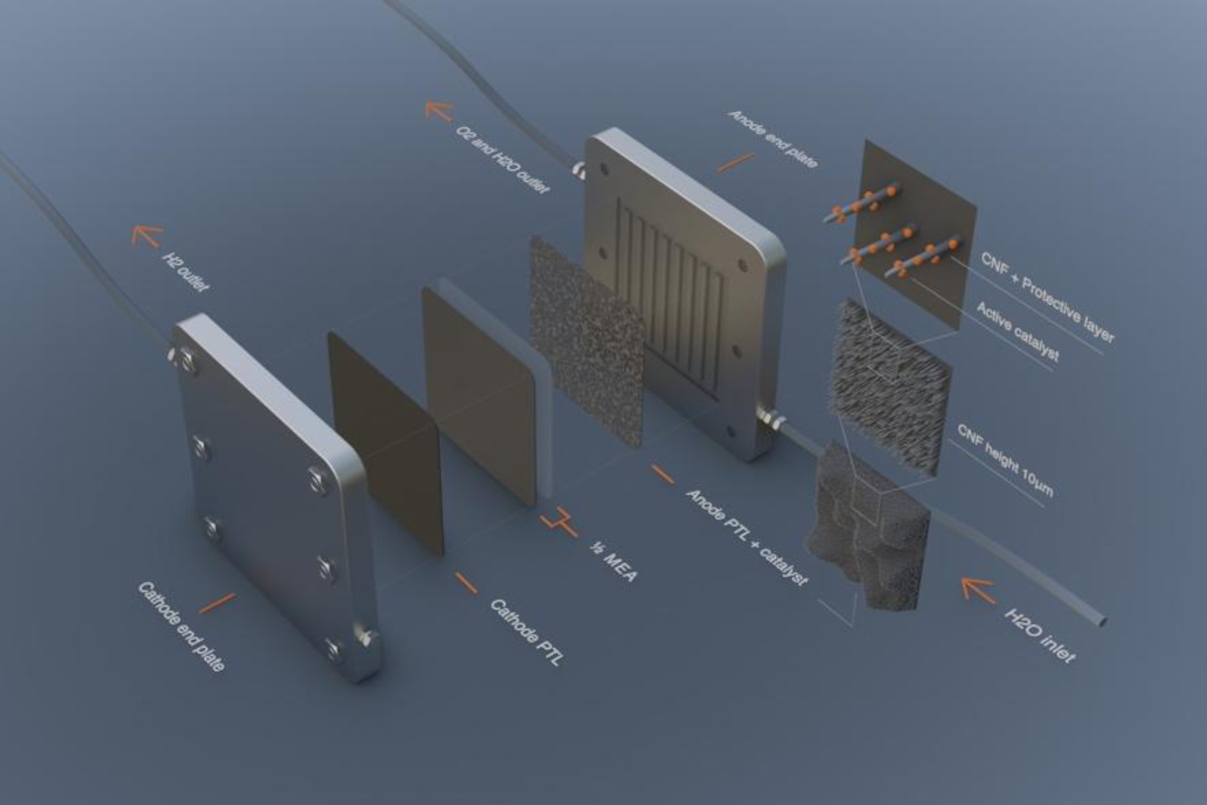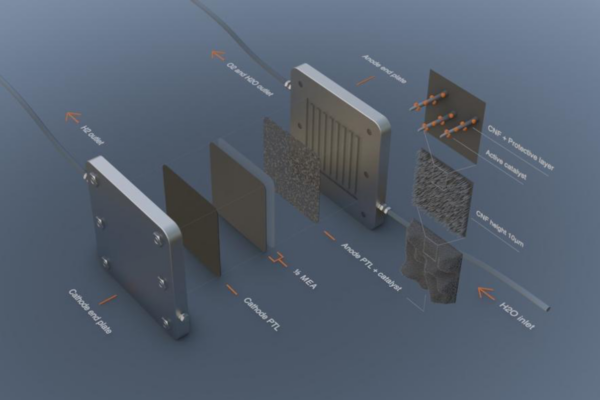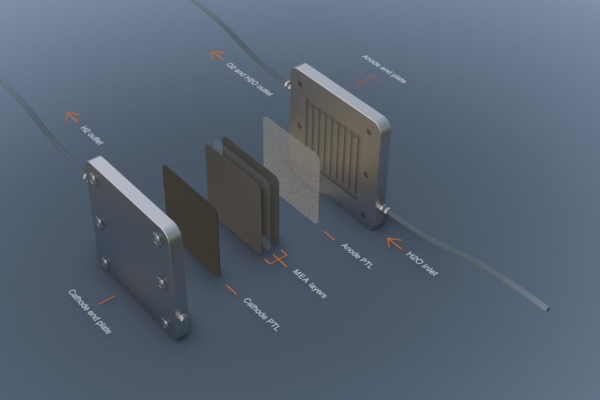Sign up for our newsletter!
Your data will be handled in compliance with our privacy policy.
Your data will be handled in compliance with our privacy policy.

With our carbon nanofibers (CNFs) fabrication technology, we develop material solutions for use in the hydrogen industry.
Currently, we focus on improving the electrochemical cell in PEM electrolyzers and fuel cells. The cell enables the conversion of electricity into hydrogen and vice versa. Thus, it’s a key component in storing and transmitting renewable energy and decarbonizing industry, transportation, and heating.
Today’s PEM electrolyzers use costly catalyst particles which, in contact with the membrane, enable hydrogen to be formed. These catalyst particles are usually iridium or platinum. In traditional technology, these catalyst particles are mixed in ink that is applied directly with a membrane. However, the method is inefficient as not all these catalyst particles are in contact with the membrane.
Smoltek’s unique technology uses coated (corrosion protected) carbon nanofibers (CNFs) as catalyst support, making all the extremely expensive iridium catalysts in full contact with the MEA. The result is that the need for iridium particles can decrease radically – we have already showed that our cell material can produce the same amount of hydrogen with only 0.5 mg iridium/cm2 as a conventional cell that uses 2.5 mg iridium/cm2.
Another advantage of this new cell material technology is that the electrolyzer cell itself can be minimized by 2–3 times.
However, this is, of course, a trade-off. Smoltek’s new nanofiber-based electrolyzer cell material can either reduce the amount of costly iridium particles or reduce the size of the electrolyzer cell area by 2–3 times; all to enable more efficient CO2-free hydrogen production.
So, do you want to reduce the amount of iridium particles (and still produce the same amount of fossil-free hydrogen), or do you want to reduce the size of the cell area in the electrolyzer, thus getting a smaller and cheaper electrolyzer?


The Smoltek electrolyzer cell material combines the anode PTL with catalyst, thus reducing the MEA layer to just ½ MEA. As seen in the different zoom-ins, the porous PTL is filled with carbon nanofibers (CNFs) that penetrate the ½ MEA, enabling all of the iridium catalysts to make contact with the MEA.
Smoltek’s technology offers a solution to this problem. It enables the manufacture of a new and more efficient cell material for PEM electrolyzers based on our patent protected carbon nanotechnology that creates a three-dimensional surface structure on the anode side’s PTL layer.
The technology enables all iridium catalyst particles to come into contact with the membrane, thanks to the fact that nanotechnology means that the particles are placed directly on the surface. Thereby, the expensive catalyst particles are fully utilized; thus, the iridium catalyst load in the cell can be reduced by up to 95 percent. This is particularly important as the supply of iridium and platinum are considered critical, i.e. the future demand for these materials cannot be met with certainty, and the reduced supply risks lead to increased production costs for green hydrogen further.
Smoltek’s carbon nanofiber three-dimensional surface structure also means that the surface of the electrode (the one in contact with the membrane) is significantly increased. The surface structure means that more particles can be placed on a given surface, which means that the electrolyzer can be reduced in size by two to three times while maintaining capacity. A reduced-size means, among other things, smaller investments and lower maintenance and material costs.
Read more about our electrolyzer cell material technology in the whitepaper Introducing Smoltek Electrolyzer Technology.
Don’t hesitate to contact us with your questions.